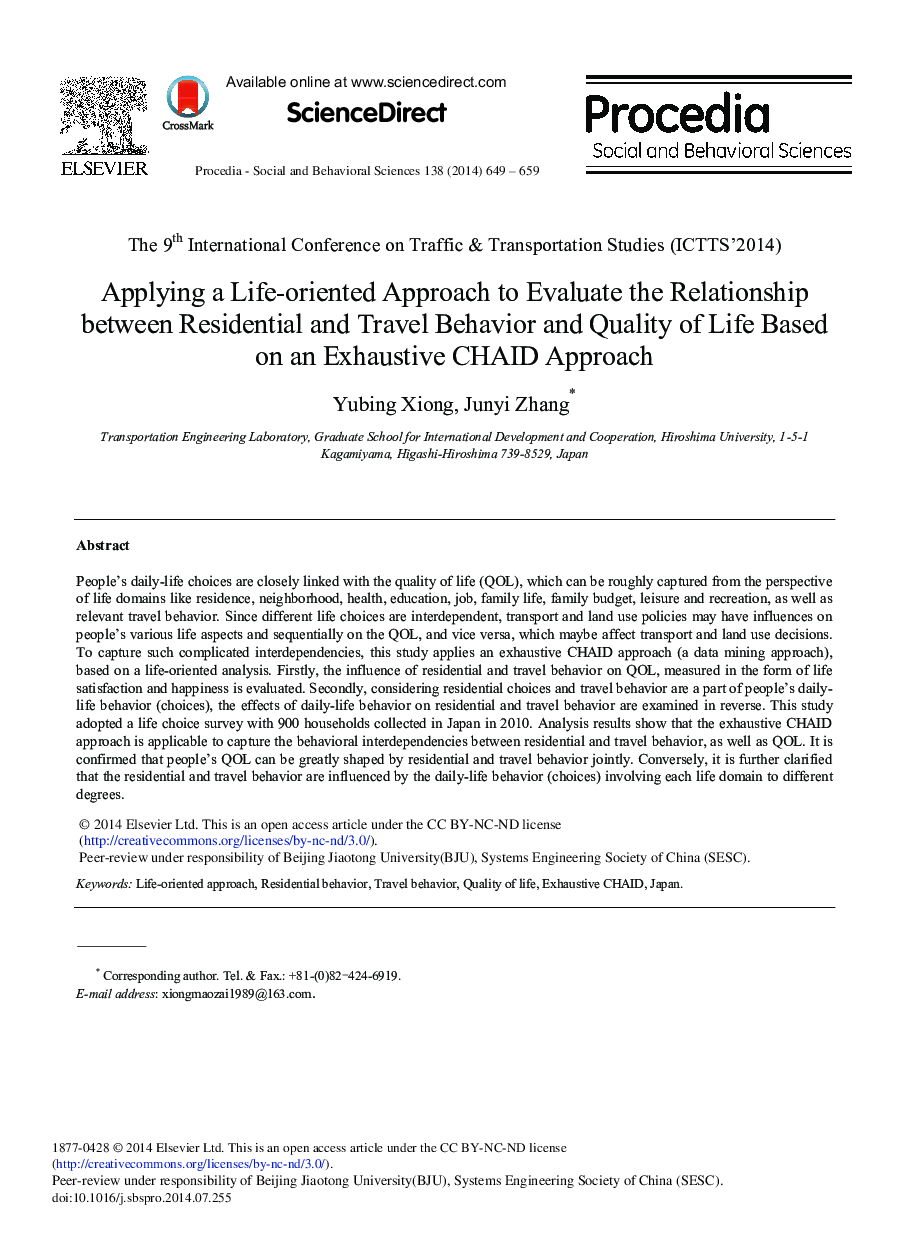| کد مقاله | کد نشریه | سال انتشار | مقاله انگلیسی | نسخه تمام متن |
|---|---|---|---|---|
| 1114263 | 1488421 | 2014 | 11 صفحه PDF | دانلود رایگان |

People's daily-life choices are closely linked with the quality of life (QOL), which can be roughly captured from the perspective of life domains like residence, neighborhood, health, education, job, family life, family budget, leisure and recreation, as well as relevant travel behavior. Since different life choices are interdependent, transport and land use policies may have influences on people's various life aspects and sequentially on the QOL, and vice versa, which maybe affect transport and land use decisions. To capture such complicated interdependencies, this study applies an exhaustive CHAID approach (a data mining approach), based on a life-oriented analysis. Firstly, the influence of residential and travel behavior on QOL, measured in the form of life satisfaction and happiness is evaluated. Secondly, considering residential choices and travel behavior are a part of people's daily- life behavior (choices), the effects of daily-life behavior on residential and travel behavior are examined in reverse. This study adopted a life choice survey with 900 households collected in Japan in 2010. Analysis results show that the exhaustive CHAID approach is applicable to capture the behavioral interdependencies between residential and travel behavior, as well as QOL. It is confirmed that people's QOL can be greatly shaped by residential and travel behavior jointly. Conversely, it is further clarified that the residential and travel behavior are influenced by the daily-life behavior (choices) involving each life domain to different degrees.
Journal: Procedia - Social and Behavioral Sciences - Volume 138, 14 July 2014, Pages 649-659